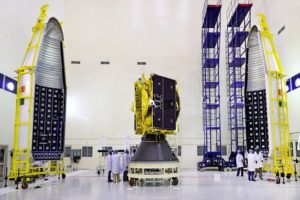
India’s proactive initiative to connect South Asian countries with its South Asia Association for Regional Cooperation (SAARC) South Asia Satellite has received a boost with the recent announcement and agreement that Bangladesh will use the capability. The Bangladesh Telecommunication Regulatory Commission (BTRC) plans to send a proposal to the Bangladeshi prime minister seeking permission to use the satellite for research purposes.
To boost regional telecommunications and broadcasting services, India designed, built, and launched the satellite in May 2017. Also known as GSAT-9 and operated by the Indian Space Research Organisation (ISRO), one of the South Asia Satellite’s 12 transponders is to be used Bangladesh for no charge.
The South Asia Satellite is to be used for telemedicine and tele-education broadcasts across South Asia, as well as for financial services communications. It also carries a remote sensing capability to assist in meteorological forecasting across the region.
Nepal, Bhutan, the Maldives, Sri Lanka, and Afghanistan are also currently connected to the South Asia Satellite. Pakistan was invited to participate but declined, citing that it had its own space programme.
India has already shared a terminal on the satellite with BTRC, according to Shahjahan Mahmood, chairman of the BTRC. “We want to use the capacity of the satellite skillfully,” Mahmood told The Daily Star newspaper. “Bangladesh can also hand over the satellite’s capacity to any research organization.”
While Bangladesh’s first commercial satellite, Bangabandhu-1, was being built, the government formed Bangladesh Communication Satellite Company Ltd to handle all business relating to satellites.
Bangabandhu-1 was constructed by French satellite manufacturer Thales Alenia Space. It was scheduled to be launched in December 2017; but its launch has been deferred to early April 2018 due to the crowded schedule of its launch provider, SpaceX.
Project documents say Bangabandhu-1’s capacity is much higher than that of the SAARC South Asia Satellite, and it is expected to provide communication services to all South Asian nations as well as Indonesia, the Philippines, Turkmenistan, Kyrgyzstan, and Tajikistan.
“Our own satellite can be used for commercial purposes and we can also sell its capacity to other countries while the South Asia Satellite will be used only for limited purposes, and its capacity will never be sold,” Mahmood added.
Still, the inclusion of Bangladesh in the South Asia Satellite project positions India as a regional space leader and public goods provider, and may pave the way for future Indian-led regional space cooperation in an era of intense geopolitical competition.


